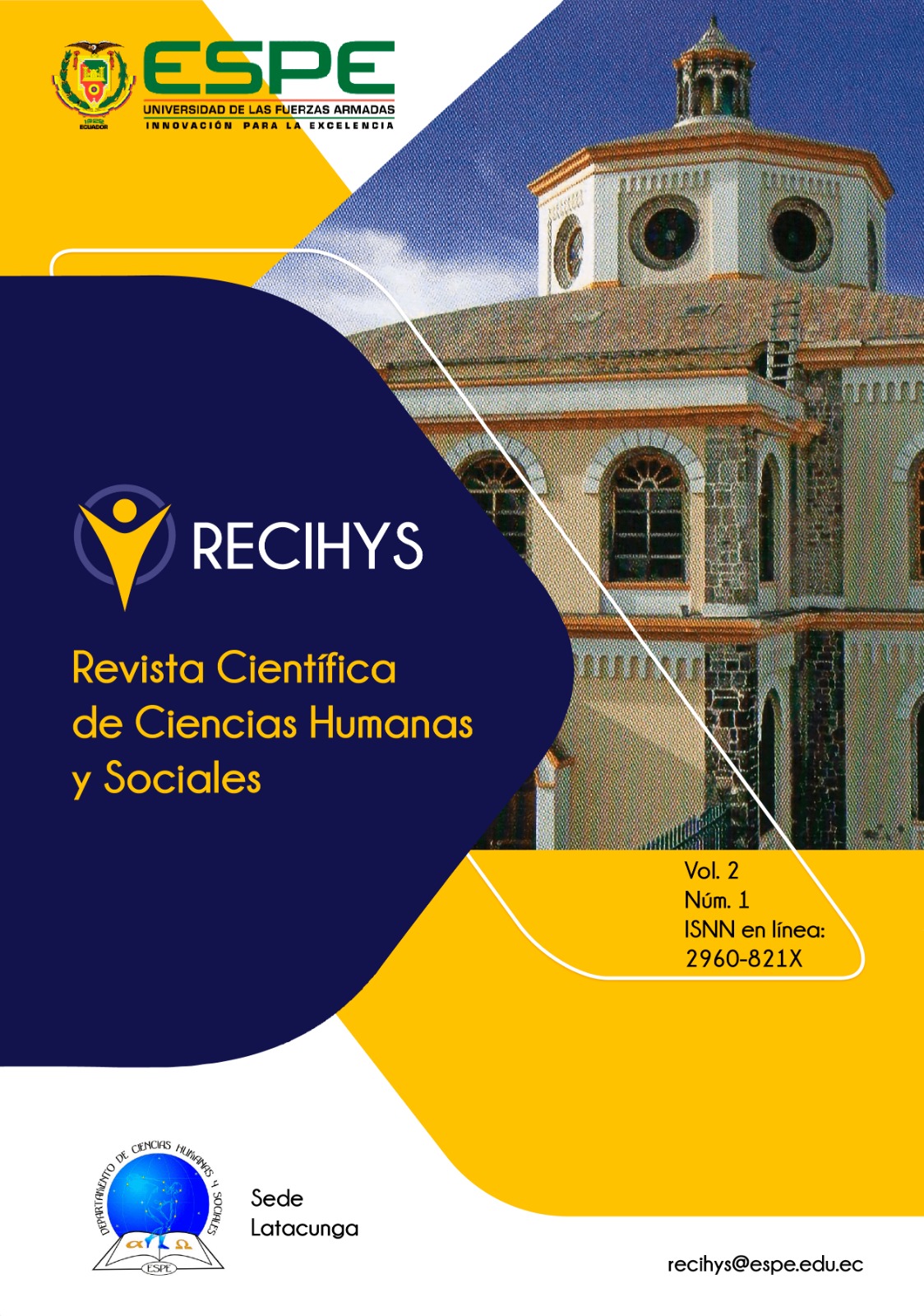Challenging inequalities: a socio-cultural analysis of Cotopaxi province
Main Article Content
Abstract
Socioeconomic disparities in the Cotopaxi Province, Ecuador, have generated internal migration to urban development poles. The study analyzes demographic and quality of life indicators, using data from the Ecuador 2022 Census. A cross-cutting approach was used that considered equal rights, protection from risks, and measures against childish malnutrition.
The illiteracy rate and digital illiteracy revealed educational challenges. The school attendance rate was 42.2% in early education, 94.2% in basic education, and 80.1% in high school.
Poverty, especially in rural areas, reflected a high incidence, affecting access to basic services, health and education. The National Survey on Family Relations and Gender Violence against Women ENVIGMU – NSGVW - revealed rates of violence over 70% in women aged 15 and over, highlighting psychological violence" (National Institute of Statistics and Censuses, 2019).
Based on the findings, it is indicated that recommendations should involve inclusion policies that involve gender, education, health, and economic development. A detailed programme is offered with the aim of eradicating inequality and improving living conditions, which involves strategies to deal with malnourished children as well as sustainable development measures.
Downloads
Article Details

This work is licensed under a Creative Commons Attribution 4.0 International License.
Authors who publish in this journal agree to the following terms: Authors retain the copyright and guarantee the journal the right to be the first publication of the work, as well as, licensed under a Creative Commons Attribution License that allows others share the work with an acknowledgment of the authorship of the work and the initial publication in this journal. Authors may separately establish additional agreements for the non-exclusive distribution of the version of the work published in the journal (for example, placing it in an institutional repository or publishing it in a book), with acknowledgment of its initial publication in this journal. Authors are allowed and encouraged to disseminate their work electronically (for example, in institutional repositories or on their own website) before and during the submission process, as it may lead to productive exchanges as well as further citation earliest and oldest of published works.
How to Cite
References
Aguirre Mendoza, Zhofre Huberto (2012), Diversidad Étnica-Cultural Del Ecuador. Recuperado de : http://dspace.unl.edu.ec/jspui/handle/123456789/445
CEPAL (2020), Planificación para la reducción del riesgo de desastres en el marco de la Agenda 2030 para el Desarrollo Sostenible.
Recuperado de: https://hdl.handle.net/11362/46001
CEPAL,(2020), El método de las necesidades básicas insatisfechas (NBI) y sus aplicaciones en América Latina. Recuperado de: https://repositorio.cepal.org/server/api/core/bitstreams/da8d48c5-0807-4bd1-b330-c0a9e1566e02/content
CEPAL y PNUD (1989): Ecuador. Mapa de Necesidades Básicas Insatisfechas, Naciones Unidas, Cepal (División de Estadística y Proyecciones), PNUD-RLA/86/004.
Delgado, Daniel & Vallecilla, Andrea & Ponce, Jorge & Chiluisa, Mayra. (2020). Movilidad Urbana Sustentable: Centro Histórico de Latacunga -Ecuador.
FAO (2021), Migración, Agricultura Y Desarrollo Rural, Recuperado de: https://www.fao.org/3/i6064s/i6064s.pdf
Feres, Juan Carlos y Xavier Mancero (1999): Enfoques para la Medición de la Pobreza. Breve Revisión de la Literatura, 4to Taller Regional del Mecovi, CEPAL, LC/R.1985, enero de 2000. FlacsoAndes (2018), Atlas socioambiental de Cotopaxi.
Recuperado de: https://biblio.flacsoandes.edu.ec/libros/digital/43289.pdf
GADPC (2021). Actualización Del Plan De Desarrollo Y Ordenamiento Territorial De Cotopaxi 2021 – 2025
INEC (2019), Encuesta Nacional sobre Relaciones Familiares y Violencia de Género contra las Mujeres – ENVIGMU, Recuperado de: https://www.ecuadorencifras.gob.ec/documentos/web-inec/Estadisticas_Sociales/Violencia_de_genero_2019/Principales%20resultados%20ENVIGMU%202019.pdf
INEC (2018), Atlas de Genero, Recuperado de: https://www.ecuadorencifras.gob.ec/documentos/web-inec/Bibliotecas/Libros/Atlas_de_Genero_Final.pdf
INEC (2023), visualizador territorial del Censo Ecuador 2022, Recuperado de: https://censoecuador.ecudatanalytics.com/
Iniciativa Spotlight (2019), Relaciones Familiares y la Violencia de Género contra las Mujeres (ENVIGMU 2019) y de femicidio, Recuperado de:
Ministerio de Salud Pública del Ecuador (2018), Manual Calificación de la discapacidad. Recuperado de:
NAEYC. (2009). Práctica Apropiada para el Desarrollo en Programas para la Primera Infancia para la Atención de Niños desde el Nacimiento hasta los 8 Años de Edad. Recuperado de: http://goo.gl/tEKoGG
ONG Manos Unidas (2024), ¿Qué es la pobreza? Recuperado de: https://www.manosunidas.org/observatorio/pobreza-mundo/definicion-pobreza
SEMPLADES (2023), Guía Para La Formulación/Actualización De Planes De Desarrollo Y Ordenamiento Territorial, Recuperado de: https://www.planificacion.gob.ec/wp-content/uploads/2023/06/PDOT-ACUERDO-Nro.-SNP-SNP-2023-0049-A.pdf
Tinajero, Alfredo. (2014). Trayectorias de Neurodesarrollo en el Ecuador: Una lectura de los indicadores de desarrollo humano. Recuperado de: http://goo.gl/qkojO5
UNDRR (Oficina de las Naciones Unidas para la Reducción del Riesgo de Desastres) (2020), Marco de Sendai para la Reducción del Riesgo de Desastres, Recuperado de: https://sendaimonitor.unisdr.org.
UNICEF (2019), Niños, alimentos y nutrición. Recuperado de: https://www.unicef.org/media/62486/file/Estado-mundial-de-la-infancia-2019.pdf

